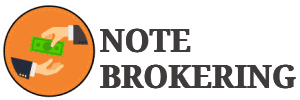Assessing your workload: Streamlining your note brokerage business starts with understanding the volume and complexity of your workload.
Contents
- 1 Assessing your workload: Streamlining your note brokerage business starts with understanding the volume and complexity of your workload.
- 2 Developing a system: Implementing a structured system that allows you to efficiently manage notes, documents, and client information is essential for success.
- 3 Creating a workflow: Establishing a clear workflow ensures that tasks are completed in a timely manner and nothing falls through the cracks.
- 4 Prioritizing tasks: Learning how to effectively prioritize tasks based on urgency and importance helps you stay organized and productive.
- 5 Time management techniques: Adopting time management strategies, such as setting deadlines, using calendars, and avoiding multitasking, helps you maximize productivity.
- 6 Utilizing technology: Leveraging technology tools, such as note management software or project management apps, can significantly enhance your organizational skills.
One crucial step in streamlining your note brokerage business is to assess the volume and complexity of your workload. Understanding the extent of your workload will enable you to effectively allocate resources and implement efficient processes that will save you time and boost productivity.
Begin by taking stock of the number of notes you currently handle and the average time it takes to complete each transaction. Consider the level of detail involved in each transaction, such as the complexity of the note terms, legal requirements, and any additional services you provide. This assessment will help you identify areas where bottlenecks occur and determine the necessary steps to streamline your operations. By gaining a comprehensive understanding of your workload, you can proactively develop strategies to improve efficiency, reduce errors, and enhance customer satisfaction.
Developing a system: Implementing a structured system that allows you to efficiently manage notes, documents, and client information is essential for success.
Developing a system: Implementing a structured system that allows you to efficiently manage notes, documents, and client information is essential for success.
In a world that is increasingly reliant on technology, having an organized system in place is more important than ever. Gone are the days of sifting through stacks of paper and rummaging through disorganized digital files. A structured system not only helps you stay organized, but it also enables you to find information quickly and easily. Whether you are a solopreneur or part of a larger organization, implementing a system that streamlines your note-taking, document management, and client information is crucial.
When you have a well-developed system in place, you can save precious time that would otherwise be spent searching for information. With a click of a button or a few taps on a keyboard, you can access any note, document, or client information instantly. By eliminating the need for manual searching, you can focus more on serving your clients or working on important tasks. A structured system also provides peace of mind, as you know that your important information is securely stored and easily accessible when you need it.
Creating a workflow: Establishing a clear workflow ensures that tasks are completed in a timely manner and nothing falls through the cracks.
A well-defined workflow is essential for any organization or team to ensure smooth and organized task completion. By establishing a clear workflow, tasks are completed in a timely manner, preventing any unnecessary delays or bottlenecks that could hinder productivity. It provides a structured framework that guides individuals on what needs to be done, when it needs to be done, and who is responsible for each task.
One of the key benefits of a clear workflow is that it eliminates the possibility of important tasks slipping through the cracks. With a defined process in place, every task and its corresponding deadline are recorded and communicated to the relevant team members. This ensures that everyone is aware of their responsibilities and the expectations set upon them. As a result, there is less room for misunderstandings or forgetting crucial tasks, leading to a more efficient and accountable work environment.
In conclusion, creating a workflow is a necessary step in any organization or team to ensure tasks are completed on time and nothing falls through the cracks. By providing a structured framework, it guides individuals on their responsibilities and prevents any unnecessary delays or miscommunications. With a well-defined workflow, organizations can enhance their productivity and overall success.
Prioritizing tasks: Learning how to effectively prioritize tasks based on urgency and importance helps you stay organized and productive.
Effective task prioritization is crucial for maintaining organizational efficiency and productivity. When confronted with a long list of tasks, it can be overwhelming to determine where to start. However, by understanding the differences between urgency and importance, individuals can make informed decisions and tackle their responsibilities more efficiently.
Urgency refers to the time sensitivity of a task and how quickly it needs to be completed. Certain tasks may be time-sensitive due to impending deadlines or commitments. It is crucial to identify these tasks and prioritize them accordingly to avoid any last-minute rush or detrimental consequences. By tackling urgent tasks promptly, individuals can effectively manage their time and reduce the risk of missing deadlines.
On the other hand, importance refers to the significance and impact of a task on one’s goals and overall objectives. Not all tasks are created equal, and understanding the importance of each task allows individuals to allocate their resources and effort accordingly. By focusing on tasks that align with their long-term objectives and contribute to their personal or professional growth, individuals can ensure that they make meaningful progress and avoid wasting time on trivial matters.
An efficient task prioritization strategy involves considering both urgency and importance. By analyzing their task list and distinguishing between urgent and important tasks, individuals can create a realistic and effective plan to maximize their productivity.
Time management techniques: Adopting time management strategies, such as setting deadlines, using calendars, and avoiding multitasking, helps you maximize productivity.
Setting deadlines is a proven time management strategy that can greatly enhance productivity. By creating clear and specific targets for completing tasks or projects, you establish a sense of urgency and focus. Deadlines help to prioritize workload and ensure that important tasks are completed on time. Moreover, they provide a sense of accomplishment and motivation when met, boosting overall productivity and efficiency.
Utilizing calendars is another effective time management technique that aids in maximizing productivity. By scheduling tasks and responsibilities on a calendar, you can easily visualize your daily, weekly, and monthly commitments. This allows for better organization and planning, as well as the ability to allocate appropriate amounts of time for each task. Furthermore, calendars help in avoiding overbooking or double-booking of appointments, reducing stress and potential conflicts. By staying on top of your schedule and being mindful of time, you can optimize productivity and make the most of each day.
Utilizing technology: Leveraging technology tools, such as note management software or project management apps, can significantly enhance your organizational skills.
One of the key strategies for improving organizational skills is to leverage technology tools. In today’s digital age, there are numerous software and apps available that can assist in managing notes and projects more efficiently. By utilizing note management software, individuals can easily create, organize, and access their notes, making it convenient to retrieve important information whenever needed. Similarly, project management apps offer a centralized platform to plan and track tasks, collaborate with team members, and maintain project timelines. With these technology tools, the process of keeping track of important tasks and information becomes streamlined and hassle-free, enhancing overall organizational skills.
Moreover, technology tools provide additional benefits beyond just organizing information. They often come equipped with reminders and notifications, ensuring that important deadlines and appointments are never missed. Additionally, these tools offer a search function, enabling users to quickly locate specific notes or tasks, even if they were created some time ago. This saves valuable time and eliminates the frustration of manually searching through piles of paper or endless folders on the computer. Furthermore, many note management software and project management apps can be accessed across different devices, allowing individuals to seamlessly switch between their computer, tablet, or smartphone. This flexibility enables users to stay organized and productive, regardless of their location or the device they have on hand.

